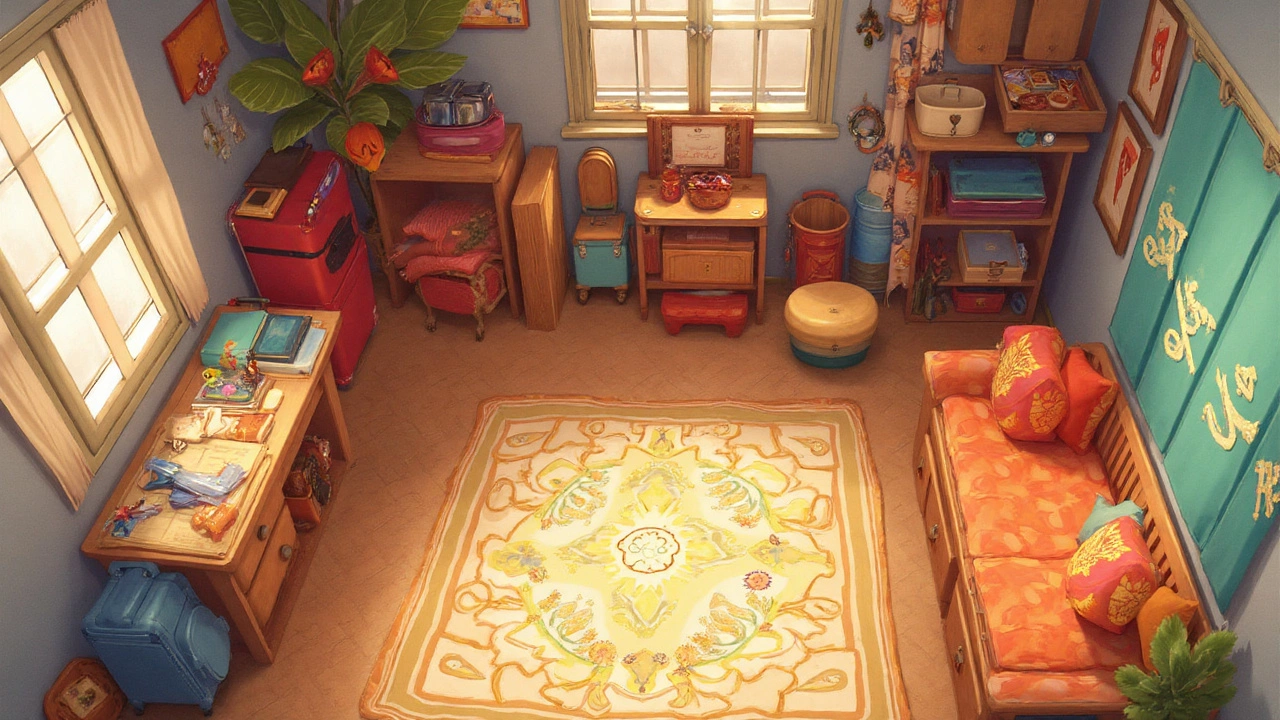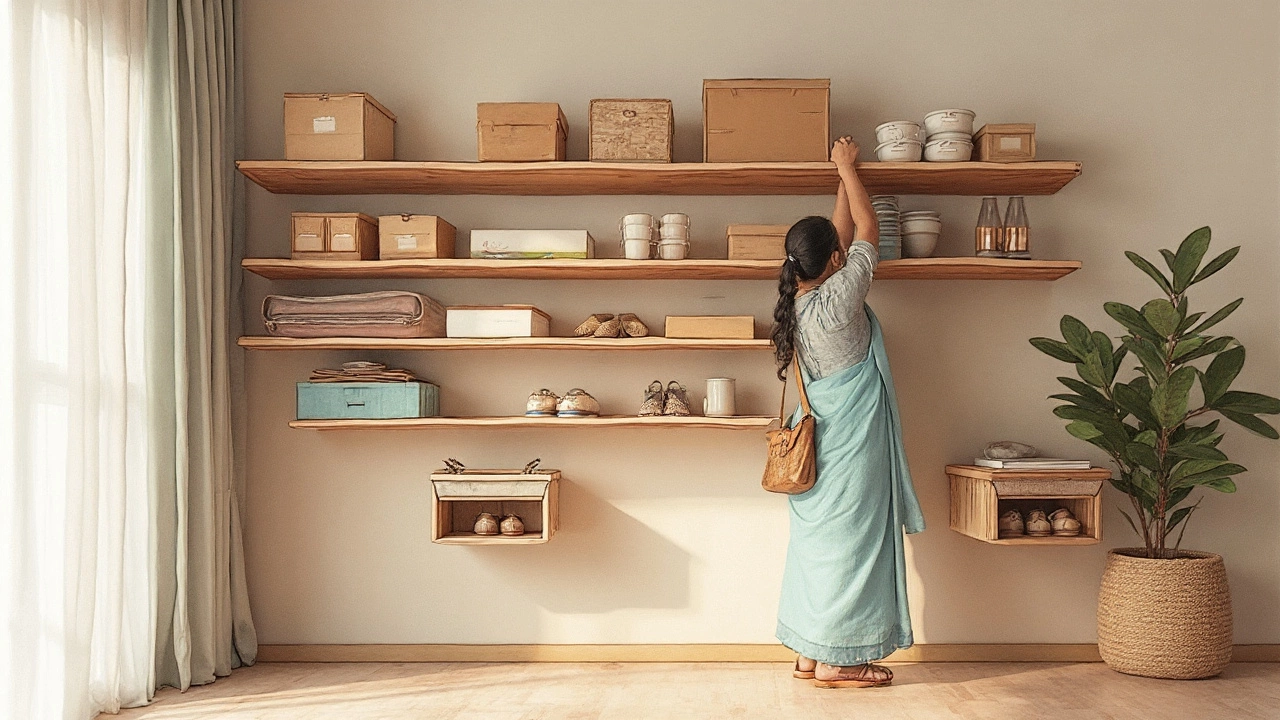Imagine finally opening your storage room and knowing exactly where to find your camping gear, Christmas lights, or box of old school trophies—no teetering pile of cardboard, no haunted-house vibes. But hit rewind for a sec—if your storage room is too tiny, you won't fit what you have. Too big, and you give up precious space you never use. Picking the right size for a home storage room is weirdly satisfying when you get it right. In Wellington, even on a windy day, nothing beats feeling prepared and organized.
What Defines a "Good" Storage Room Size?
If you look up building codes in New Zealand, you won’t find an exact number stamped on how large your storage room must be. Builders and designers usually agree on a loose “minimum recommended size”—typically 1.5 to 2 square meters for a tidy, no-fuss storage experience. That’s around the size of a decent walk-in wardrobe or a big closet. You’ll find heaps of three-bedroom homes tucking away a storage nook of about 1.5m x 1.5m. But that’s just the starting line.
What you actually need swings on your lifestyle. Got kids? Bikes? Craft gear? A storage room for a single adult in an apartment looks totally different from a family’s gear-haven in the suburbs. Most homebuilders will chat through what you want to stash before drawing up plans. For an average Kiwi household, a good size hovers between 2.5 and 4 square meters—roughly the space of a small bathroom. It’ll hold vacuum cleaners, sports gear, seasonal decorations, maybe a ladder (or two you forgot you even owned).
Still, don’t just toss numbers at the wall. Draw a quick sketch of your must-store items. See how many cubic meters they need stacked or shelved, then add 20-30% for breathing room. Skimping means you’ll have piles on the floor or stuff crammed so tight you never bother finding it. Go massive and you risk turning your storage room into the graveyard of forgotten junk—a recent Auckland study found the average household owns over $2,500 of unused goods. Big, empty space can turn into giant clutter zones really fast.
Plus, where your storage sits matters. Near the garage? Make it large enough for bikes or lawn tools. Near the kitchen? Maybe include pantry overflow. Every square meter eats into your home’s footprint, so you want just enough to keep spaces decluttered without wasting living area you’ll actually use every day.
Here's a fun fact: Scandinavian homes have some of the smallest dedicated storage rooms on average in Europe, yet score highly on home organization surveys, mostly because of clever shelving. The lesson? Smart design beats brute size every time.

How to Design an Efficient Storage Room
Getting clever with layout and shelves is the secret sauce. If you leave your storage room as an empty square, stuff just gets tossed in. Putting in shelves, hooks, and wall racks changes everything. For starters, you're making use of all three dimensions—don’t just think in floor space. Floor-to-ceiling shelving hardware is now standard in new builds, and you can get sturdy metal racks at nearly any major hardware shop.
Skip deep shelves—they just hide things at the back. Experts suggest 30-45cm (12-18”) deep shelves for most goods. This lets you see and grab items without digging. For taller storage rooms, fit a foldable step stool on a hook. Small spaces? Install sliding or stackable bins under shelves for shoes, cords, or batteries, and use clear jars for tiny odds and ends. Wellington builds often use ventilated wire racks—they stop dampness and keep brooms or boxes from getting musty in the wet seasons.
If you plan to stash bikes, surfboards, or garden tools, you need walls free for hooks or vertical rails. Heavy items go on the lowest shelves for safety. Budget an aisle at least 60cm wide so you aren’t squeezing past. Some modern homes add charging stations for vacuum robots or power tools, and you’ll thank yourself later if you add a double power outlet up high for these jobs.
If you want next-level neatness, label your shelves and bins. It sounds fussy, but you only reap the benefits after six months when you don't have to dig for Christmas lights behind snorkeling gear. Modular wire baskets can be taken out, filled, then stacked back. You don’t need a massive space if you use every inch wisely—look at “tiny home” and “vanlife” storage hacks for wild inspiration.
Believe it or not, humidity and airflow matter too. Wellington isn’t shy about moisture, so build in ventilation—either a simple vent grill or a tiny extractor fan if your storage is tucked in a damp corner. Moisture eats up cardboard, taints linens, and is the primary reason people regret putting their precious stuff in a musty cubby-hole. If your storage room will hold anything sensitive—old photos, electronics, vintage clothes—you want it as dry and ventilated as your bedroom.
Some homes use the storage room entryway as a mudroom to tame muddy boots and wet coats. That hybrid setup doubles up on usefulness. But if your entry is a narrow hallway, think about horizontal wall storage instead. At the end of the day, everything comes down to matching the space you have with your actual needs—like a tailored suit for your gear, not a hand-me-down.

Clever Tips and Modern Trends for Storage Rooms
Now, there’s no one-size-fits-all—but the best setups follow a few new trends. First, think flexible. Adjustable shelving tracks let you change shelf heights as your needs shift, which is great if your storage morphs between Christmas trees and camping gear all year. More homes are using lighting with motion sensors—huge game-changer on stormy evenings or during a power cut, and you’ll never juggle a torch in your teeth again.
People are swapping boring swing doors for pocket or sliding doors, especially in narrow hallways. Those save precious room—plus, nothing beats the soft thunk of a quality slider closing out the mess. Want extra style points? Paint your storage room a bright colour. There’s research showing people are more likely to keep things tidy in spaces that feel cheerful and well-lit.
Home automation has slowly crept into storage zones, too. You can find smart shelves with built-in sensors that tell you what items you haven’t touched in a year. Is it a bit overkill? Maybe, but for the tech-hungry homeowner, it's a fun way to reduce clutter and track seasonal stuff. More realistically, most Wellington households are just adding simple hooks for reusable grocery bags and key hangers near the storage entry—practical ideas that don’t break the bank.
In earthquake-prone regions, fixed shelving or anti-tip brackets are smart. If you’re retrofitting your home, look for furniture anchors and secure heavy items so nothing crashes during a big shake. Keep important documents and valuables in plastic boxes on the top shelf—safe from damp and accidental floor flooding.
The big takeaway? A “good” size for a storage room balances what you own with how creatively you use the space. On average, a *storage room size* of 2.5 to 4 square meters fits most needs—anything smaller, and you’ll be playing Tetris with your stuff. Anything bigger and you face the eternal risk of filling it with junk just because you can. Use modular shelves, invest in ventilation, and don’t forget about lighting. Set up your storage right from the start, and you’ll never dread a rainy Wellington afternoon spent digging for a lost rugby ball or winter boots.

